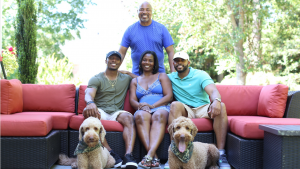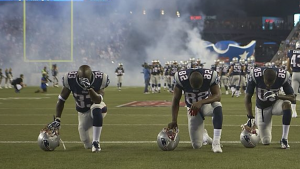My Story: Trent Dilfer
By: The Increase
March 25, 2016

In 2003 Trent and Cassandra Dilfer took their family on a vacation to Disneyland. Naturally, it was a bummer but hardly a crisis when their five-and-a-half year-old son, Trevin, got a cold.
“Like with all kids, you learn the rhythm of when they bounce back. So we were waiting for that,” Trent remembers. “But he wasn’t bouncing back.” Trevin was listless and in low spirits all the way home.
They took Trevin to the emergency room; the doctors’ consensus was that he was dehydrated. No one was especially worried, but the doctors did want to do some blood work. So Trent left Trevin at the hospital with Cassandra while he went home with his three daughters.
“I wasn’t home for five minutes before I got a call from the doctor saying, ‘On the way to the hospital your son’s heart stopped.’”
Trent and Cassandra watched helplessly as the doctors swarmed in, attempting to resuscitate Trevin. A nurse finally was able to bring his heart back into action long enough for the doctors to hook Trevin up to a heart-lung bypass machine. As long as he was on the machine, Trevin was breathing. But he couldn’t stay on the unit in that hospital; he needed to be transferred.
“All the medical transport units that could support this machine were in Iraq because we’d just started the war,” Trent recalls. “He could go to Stanford or the University of Michigan but we couldn’t get him to either.”
It looked hopeless, but the Dilfers’ network went to work on their behalf and, somehow, a suitable medical transport became available. Trent and his wife rode in their friend’s Suburban for an unbearably tense two-and-a-half hour ride behind the ambulance carrying their son.
“It was the worst two-and-a-half car ride in the history of the world,” says Trent. “Every bump we went over, we weren’t sure if he made it.”
God brought Trevin through the journey to the ICU at Stanford’s Lucile Packard Children’s Hospital. The Dilfers’ family and friends set up “Camp Trevin” at Packard Children’s, where they prayed together constantly.
“So many people laid down their lives, in a sense, to love on us and care for us during this time,” Trent remembers through tears.
Trevin was on the bypass machine for the next 40 days, as his body grew weaker and weaker. A systemic infection made him ineligible for a heart transplant and his pain level continued to rise. He was losing the battle. After praying and seeking Godly counsel, the Dilfers made the agonizing decision to take their son off of life support.
But in this time of devastation, Trent and Cassandra experienced something beautiful.
“One of the most defining moments of my life,” says Trent, “is when we found out that we had to take Trevin off of life support—we were praying together in a back room and she [Cassandra] looked at me and said, ‘Can you leave me alone for a moment?’ I walked away. . . . I’ve never heard a scream of more pain then I heard from her that day—she was crying out to God. I was so amazed that she had the maturity to be willing to scream out to God.”
On April 27, 2003, Trevin passed into the arms of his Savior.
“It’s horrific, and I’m not here to say it’s not,” says Trent, no longer fighting the tears, “but what’s equally awesome is that we have a God who volunteered that for His Son on our behalf.”
“For God so loved the world that He gave His one and only Son, that whoever believes in Him shall not perish but have eternal life.” —John 3:16
“People say, ‘Why would you believe in this Jesus?’ And I get it,” he continues, “but I say to them, ‘You have no idea; I’ve experienced peace during the greatest time of loss that any parent could ever have and it’s so real.’ I truly feel like it washes over me at times.”
Watch Trent share his story on The Increase:
If you enjoyed this article, please share on the following social media sites:
















